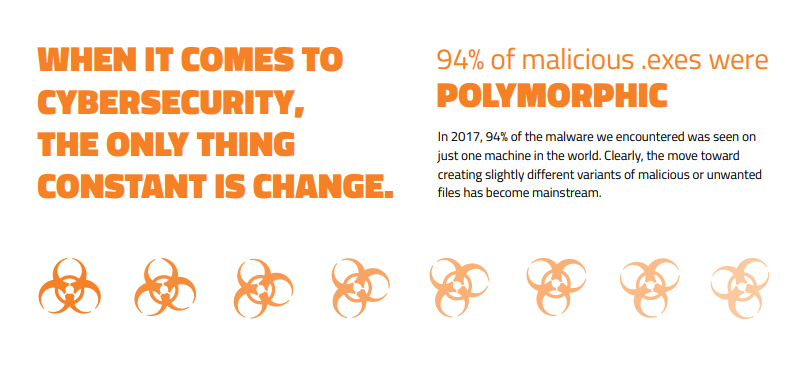In This Issue: The Threat Landscape: Past and Present
This quarter, we highlight the newest edition of our annual Threat Report. Download your free copy for a deep dive into the most important cyberattack trends of the past year, and what they indicate for the future. You can also view our Threat Report infographic to get the highlights from the report, or watch our BrightCloud Threat Intelligence video to see how our innovative threat platform uses machine learning to identify and stop emerging threats in real time. Additionally, we encourage you to view the 2018 Cyberthreat Defense Report from the CyberEdge Group to gain deeper insight into how enterprises view and handle modern threats.
See the full report!







